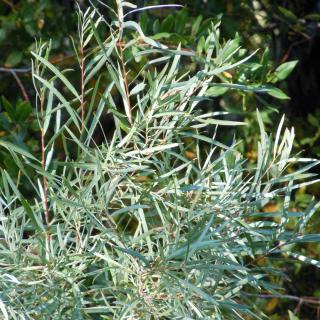

More than 300 types of willow are available nowadays (Salix). Growing to different heights, these trees and shrubs are resilient and easy to prune.
Which one fits in your garden?
Read also:
Willows all share a common liking to cool and deep soil, where they can thrust their powerful roots, but most of them still settle in fine in ordinary or even chalky soil.
Most species are very easily propagated through cuttings, since all that is needed is:
Planting a willow tree is best done in fall, in a sun-bathed spot of the garden.
 The famous weeping willow (Salix babylonica) needs a huge space to spread its 85-foot (25 meter) stature and swooping branches, but many much smaller varieties are ideal for small gardens.
The famous weeping willow (Salix babylonica) needs a huge space to spread its 85-foot (25 meter) stature and swooping branches, but many much smaller varieties are ideal for small gardens.
 Average-sized Salix exigua (10 to 16 feet or 3 to 5 m) is a bushy shrub with gray leaves that grows on poor soil.
Average-sized Salix exigua (10 to 16 feet or 3 to 5 m) is a bushy shrub with gray leaves that grows on poor soil.
With its distinctive furry catkins, and much sought after by honeybees thanks to its early blooming, goat willow (Salix caprea) can climb up to 40 feet (12 meters) tall.
Chinese willow (Salix matsudana) is definitely highly ornamental thanks to its surprising curved leaves and twisted branches. Up to 35 feet (10 meters) tall, it fits in small gardens.
Laure Hamann